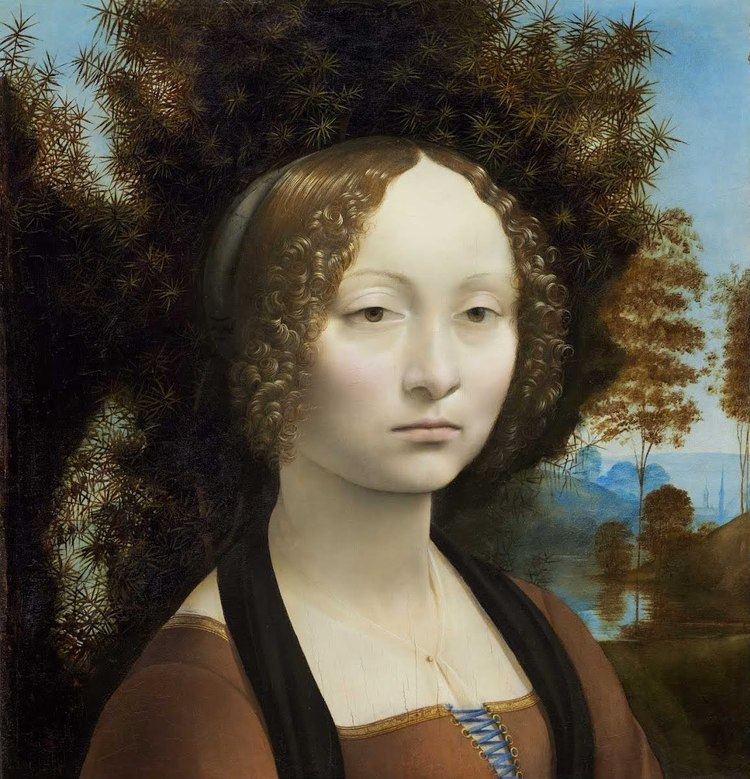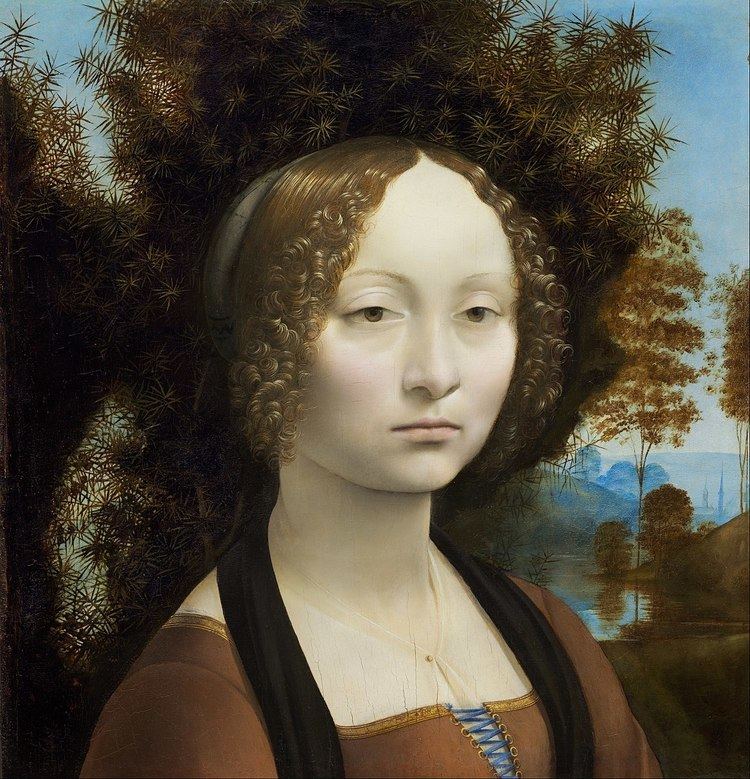Year c. 1474–8 Subject Ginevra de' Benci Role Painting Created 1474–1474 | Name Ginevra Benci Dimensions 38 cm x 37 cm Type Oil on panel Media Oil paint | |
 | ||
Similar Leonardo da Vinci artwork, Artwork at National Gallery of Art, Italian Renaissance artwork | ||
Shane guffogg the annunciation of ginevra de benci conversations with leonardo
Ginevra de' Benci is a portrait painting by Leonardo da Vinci of the 15th-century Florentine aristocrat Ginevra de' Benci (born c. 1458). The oil-on-wood portrait was acquired by the National Gallery of Art in Washington, D.C., United States, in 1967. The sum of US$5 million—a record price at the time—came from the Ailsa Mellon Bruce Fund and was paid to the Princely House of Liechtenstein. It is the only painting by Leonardo on public view in the Americas.
Contents
- Shane guffogg the annunciation of ginevra de benci conversations with leonardo
- Ginevra de benci 1474 1478 leonardo da vinci
- References

It is known that Leonardo painted a portrait of Ginevra de' Benci in 1474, painted in Florence possibly to commemorate her marriage that year to Luigi di Bernardo Niccolini at the age of 16. The painting's imagery and the text on the reverse of the panel support the identification of this picture. Directly behind the young lady in the portrait is a juniper tree. The reverse of the portrait is decorated with a juniper sprig encircled by a wreath of laurel and palm and is memorialized by the phrase VIRTVTEM FORMA DECORAT ("beauty adorns virtue").
The Latin motto VIRTVTEM FORMA DECORAT, on the reverse of the portrait, also is understood as symbolizing her intellectual and moral virtue, while the sprig of juniper ("ginepro"), encircled by laurel and palm, suggests Ginevra's name. The laurel and palm are in the personal emblem of Bernardo Bembo, Venetian ambassador to Florence, whose platonic relationship with Ginevra is revealed in poems dedicated to them. Infrared examination has revealed Bembo's motto "Virtue and Honor" beneath Ginevra's. So it is likely Bembo ordered the emblematic painting on the verso of the portrait.
The portrait is one of the highlights of the National Gallery of Art, and is admired by many for its portrayal of Ginevra's temperament. Ginevra is beautiful, but austere; she has no hint of a smile and her gaze, although forward, seems indifferent to the viewer. A strip from the bottom of the painting was removed in the past, presumably owing to damage, and Ginevra's arms and hands were lost. Using the golden section, Susan Dorothea White has drawn an interpretation of how her arms and hands may have been positioned in the original. The adaptation is based on images of hands by Leonardo that are thought to have been executed as studies for this painting.
According to Giorgio Vasari, Ginevra de' Benci was also included in the fresco by Domenico Ghirlandaio of the Visitation of Mary and Elizabeth in the church of Santa Maria Novella in Florence, but it is now believed that Vasari made a mistake and that Ghirlandaio painted Giovanna Tornabuoni.
As a woman of renowned beauty, Ginevra de' Benci was also the subject of ten poems written by members of the Medici circle, Cristoforo Landino and Alessandro Braccesi, and of two sonnets by Lorenzo de' Medici himself.
